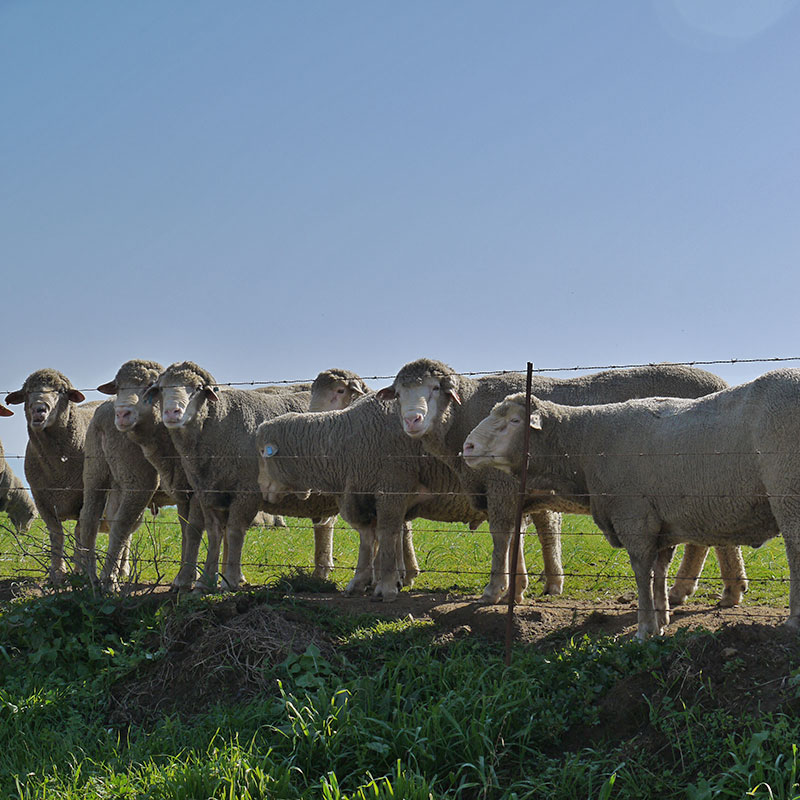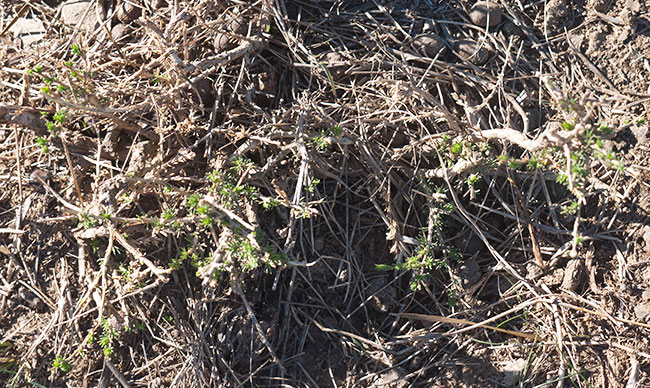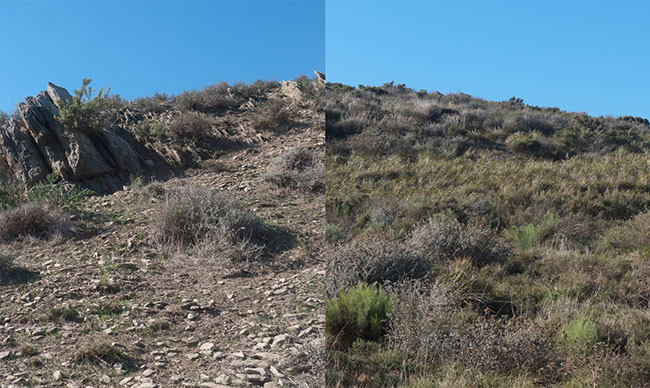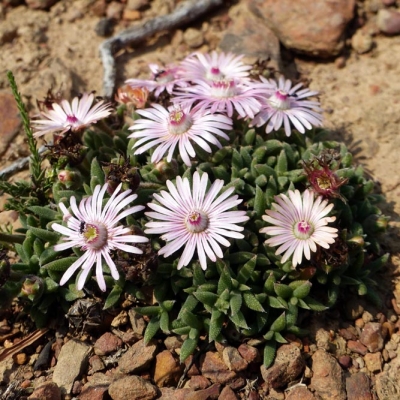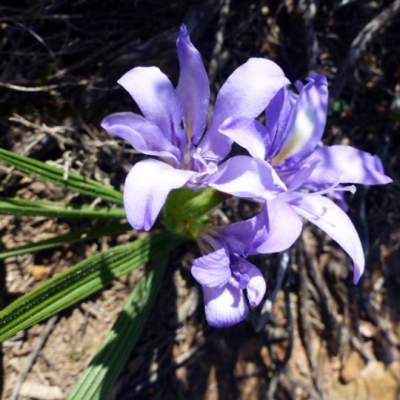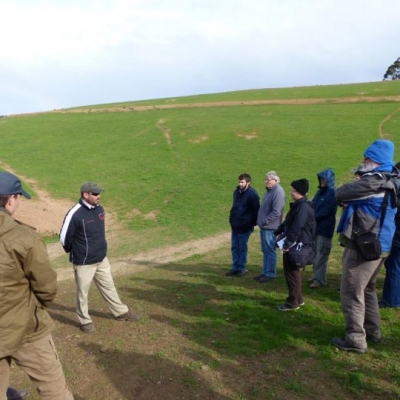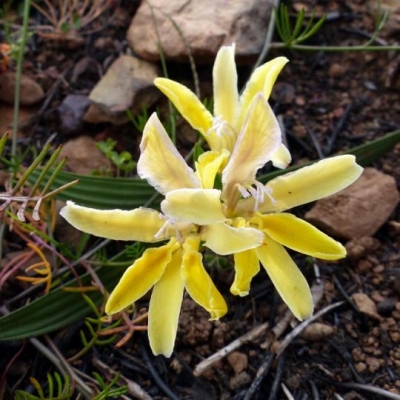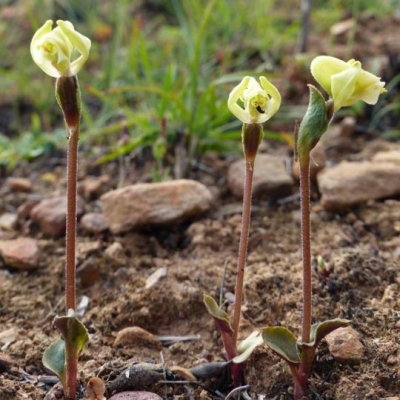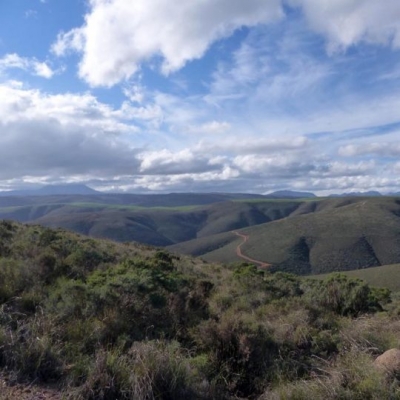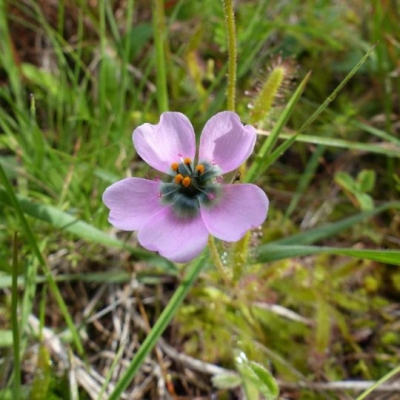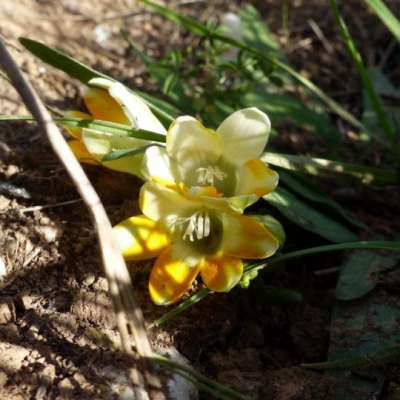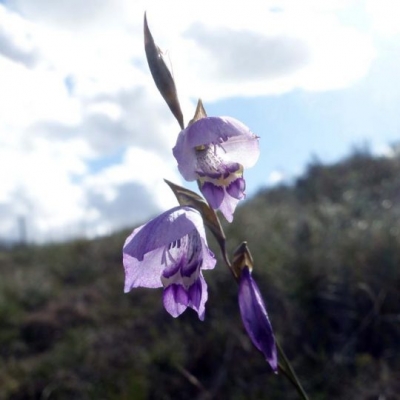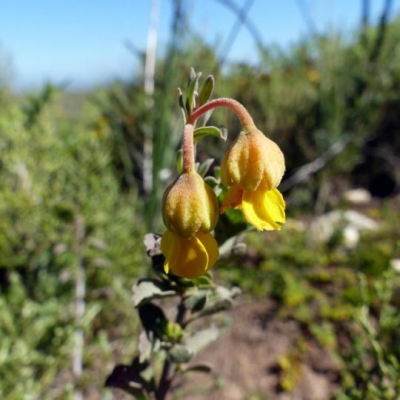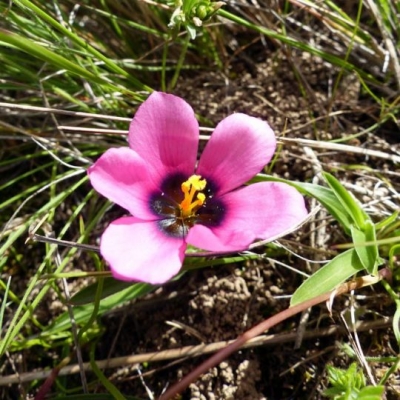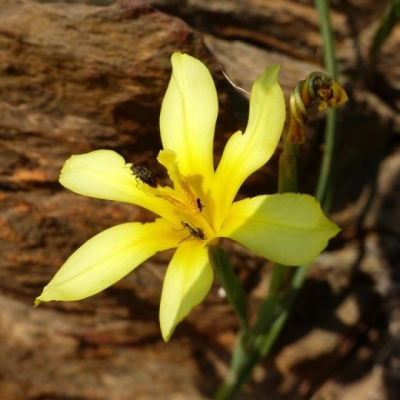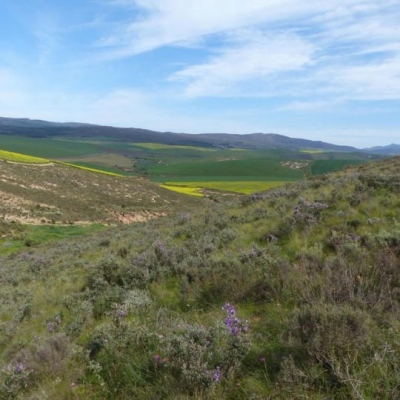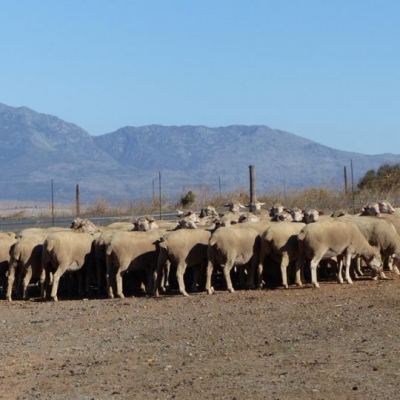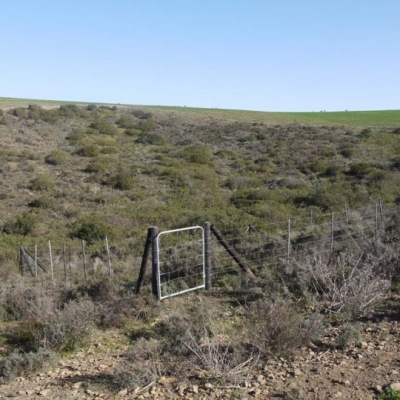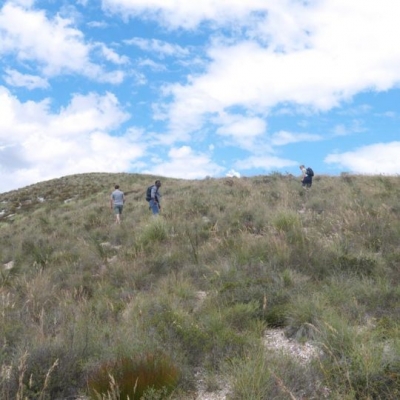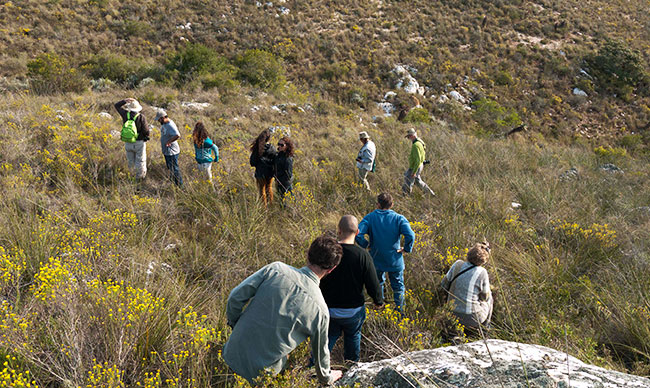By Zoë Poulsen.
The Renosterveld of the Overberg is highly biodiverse lowland vegetation, growing on fertile soils predominantly derived from shale geology. Renosterveld once covered the landscapes of the Overberg with large herds of game being commonplace. Today the Overberg has become an agricultural landscape, used for farming canola, wheat, barley and domestic livestock. Just 5% of the former extent of Overberg Renosterveld remains, with the majority now being small fragmented patches of veld within a matrix of agricultural land. All Renosterveld vegetation types in the Overberg are now classed as ‘Critically Endangered’, threatened by illegal ploughing, drift from agricultural chemicals and unmanaged heavy grazing.
Image above: Heavily grazed Aspalathus
Despite the likely negative impacts of unmanaged heavy livestock grazing on plant species richness and diversity in Overberg Renosterveld, there has been little empirical research undertaken to inform grazing management and achieve best conservation outcomes. With so little Renosterveld left, it is crucial that we manage what remains effectively to avoid further habitat degradation that can be near impossible to reverse. To address this and other knowledge gaps, the Overberg Renosterveld Conservation Trust (ORCT) has facilitated a number of applied research projects by postgraduate students, using their dedicated research centre based at Haarwegskloof Renosterveld Reserve.
My PhD research aims to unpack the effects of livestock grazing on Overberg Renosterveld vegetation, both on above ground vegetation and the soil seed bank. Long term passive restoration plots have also been used to examine trajectories of recovery through regular monitoring over four years. This post focuses on the first data chapter of the study, which uses results from thirty Modified Whittaker Plots to create a baseline dataset examining impacts of grazing by sheep and cattle on Renosterveld vegetation.
Image above: Heavily-grazed Renosterveld (left) contrasts substantially in term of plant cover and diversity with ungrazed or lightly-grazed Renosterveld (right).
Modified Whittaker Plots are 1000 m2 vegetation survey plots that have a series of nested subplots of different sizes inside. Studies have shown that they provide the best representation of plant diversity, allowing scientists to track plant species richness and diversity across different spatial scales. Thirty sites on farms across the Overberg were selected for the study and a treatment of either no grazing, grazing by cattle or grazing by sheep was applied to each site for the duration of the study. One Modified Whittaker Plot was surveyed at each site. Data was collected from each plot on which plant species were found as well as their percentage cover in each plot and subplot. Any species that could not be identified had samples collected for later identification in the herbarium. All vegetation data from the study will be fed back to the Custodians of Rare and Endangered Wildflowers (CREW) so that the data can be used in future red-listing assessments.
Research findings revealed that grazing by sheep caused a reduction in plant species richness and diversity and vegetation cover in comparison to sites with no grazing. Ungrazed sites showed higher species richness and vegetation cover of non-succulent shrubs, annual forbs and perennial forbs than at sites grazed by sheep. Sites with no grazing also had significantly higher species richness of geophytes in comparison to sites grazed by cattle and sheep. Grazing by cattle had no significant difference in species richness and vegetation cover in comparison to ungrazed sites. These findings are likely to be due to different grazing preferences by cattle and sheep. Cattle are bulk grazers with a diet consisting of up to 70% grass whereas sheep have a more varied diet with a greater focus on browsing shrubs that can consist of up to 20% of their diet.
This demonstrates that, with care, cattle grazing likely poses a low risk of decreasing plant species richness and diversity in Overberg Renosterveld. Care must therefore be taken to ensure appropriate grazing intensity to sustain geophyte diversity. Where necessary fencing Renosterveld fragments separately will assist in ensuring that the vegetation does not become overgrazed. This is key to ensuring that palatable plant species remain in sufficient numbers and are able to reproduce.
These findings add to our knowledge of rangeland ecology of Overberg Renosterveld, but we still have much to learn and further research is required. It is therefore important that we adopt a sustainable and adaptive management approach, using livestock as a ‘management tool’.
We would like to thank the Overberg farmers who have so generously allowed us access to your Renosterveld for undertaking this research. We couldn’t do it without you.
If you require further information on livestock grazing management in Overberg Renosterveld please see our information resources or contact the ORCT for further advice.

